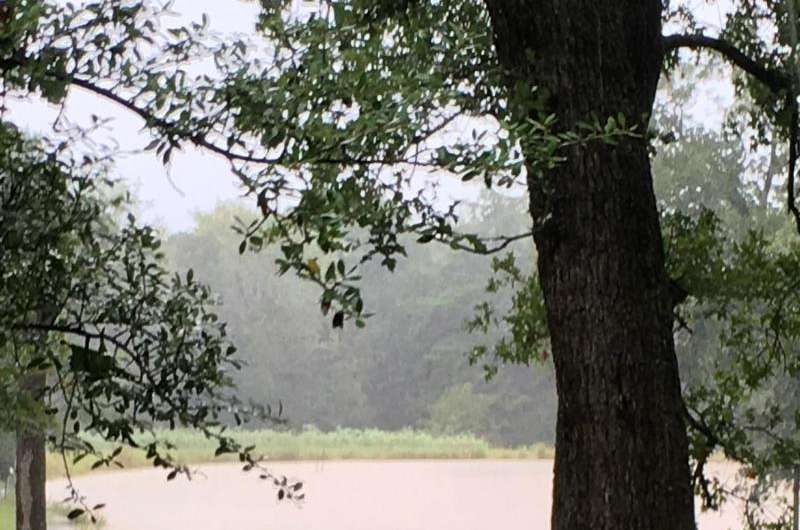Time will tell what Harvey did to Texas coastal landscapes

Unlike people and animals, plants can't evacuate when threatening weather approaches, and long tenures in flood waters can take a toll.
But as water recedes and people recover their homes in the aftermath of Hurricane Harvey, landscapes also will need to be watched for signs of stress, said Stephen Brueggerhoff, Texas A&M AgriLife Extension Service horticulture agent in Brazoria County.
"A little bit of rain is not too bad, but too much rain can be detrimental to the health of any plant," Brueggerhoff said. "These were extraordinary circumstances, so at this point it is really just a matter of waiting to see what the impact is."
Brueggerhoff said soil saturation is key.
"For perennial plants, what we really are concerned with are saturated soils that create conditions for root rot," he said. "When the rain saturates the soils causing a collection of water, plants may be standing or submerged in water."
Once saturated, there are not many options to help perennial plants, he said, except to watch for signs of stress.
"The roots of all plants need oxygen through the soil," Brueggerhoff explained. "Once the soils get saturated, that creates an anaerobic environment where the roots are not getting proper oxygenation within the soils.
"Just wait a little bit for the plant to tell you if there are signs of decline. It is not necessary to move the plants immediately," he said. "But if stress does begin to show, the owner may decide to move those plants away from the saturation."
Stress reveals itself in plants through discoloration, often as yellowing or purplish leaves, he said.
Another situation that might impede plant recovery is debris that remains from floods.
"When the water recedes, there may be other organic matter deposited on the plants," he said. "As soon as you can get to the plants, pull off that matter and let that area dry out a little bit."
When the soil is less saturated, Brueggerhoff said, residents can return to "regular maintenance mode."
"If we get into the rest of our summer without unusually heavy rains, soils appear not to be supersaturated, and the plants are absorbing moisture from the soil, re-mulch them," he said.
Woody species such as shrubs and trees take longer to show stress, he noted.
"They often don't tell us too quickly what is going on with them as far as decline. Sometimes we will not see a tree or shrub responding to those kinds of environmental conditions for six months to a year," Brueggerhoff said.
He described an ash tree that stood in 4 feet of water near his home for two days.
"The water receded quickly, so two days of saturation probably is not going to hurt that tree," he said. "But if we have plants that are under saturation for up to a week, for some plants it can cause a decline in the long run. Sometimes those kinds of conditions can be an entry point for other pathogens to grow. And things of that nature can cause the plant to decline in the long run.
"At this point, it is just a matter of waiting to see how our plants respond."
Provided by Texas A&M University



















